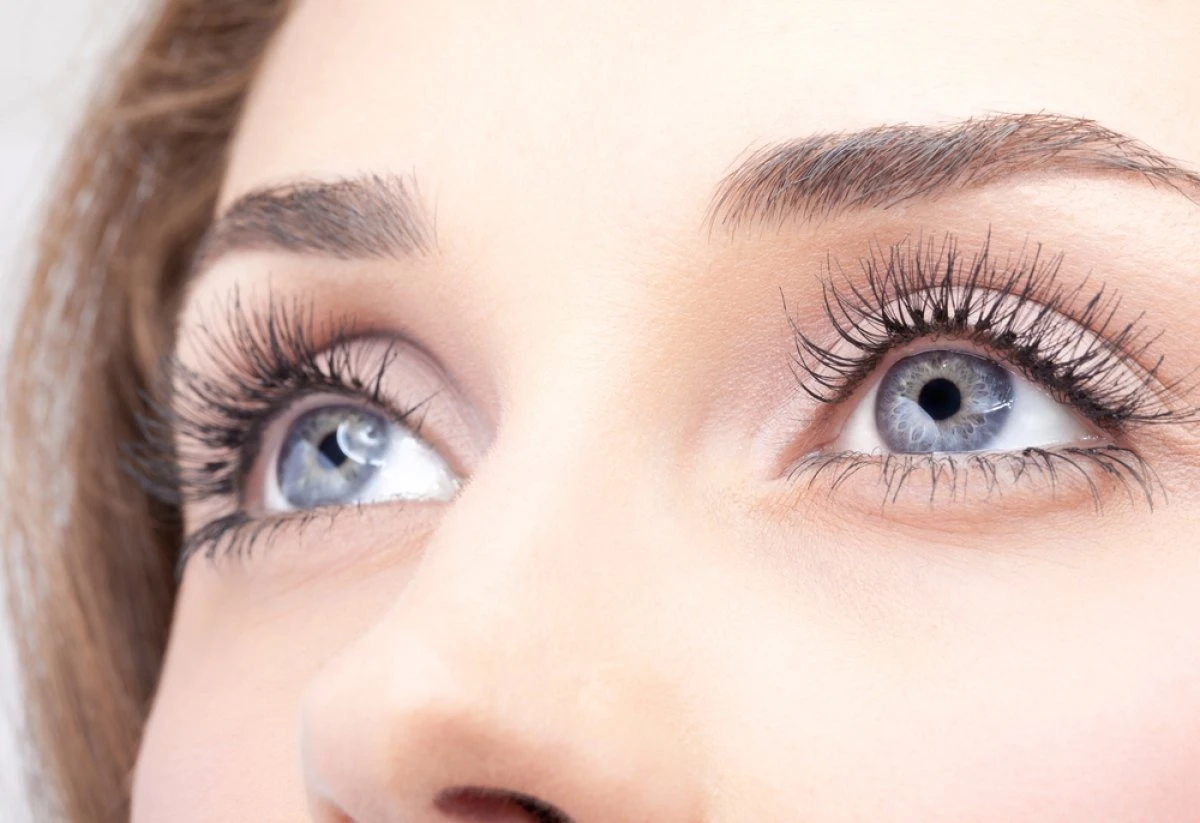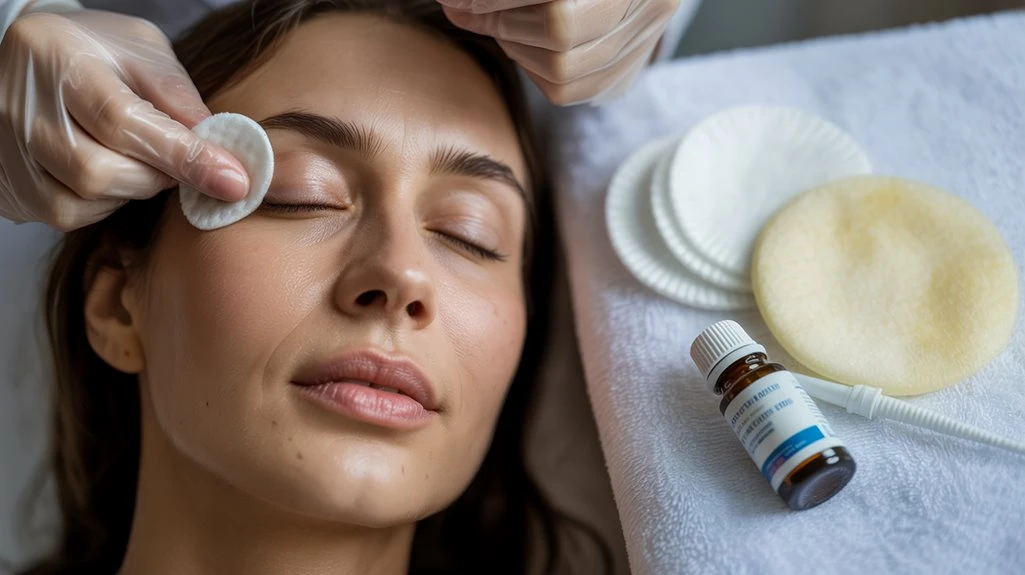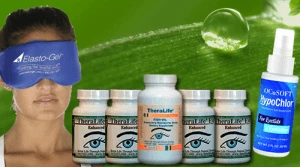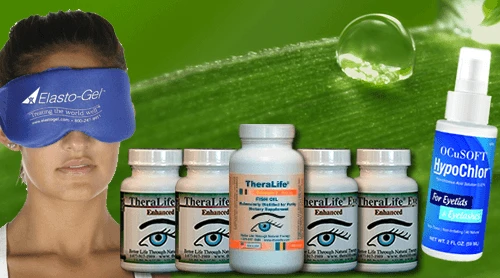To effectively manage blepharitis, consider the unique oral eye treatment offered by TheraLife, the only company providing this innovative approach. TheraLife’s products focus on addressing the underlying issues of blepharitis from the inside out, promoting comprehensive eye health. Their offerings include specialized oral supplements designed to enhance the body’s natural healing processes and reduce inflammation. By integrating TheraLife’s regimen into your daily routine, you can experience significant relief from symptoms and prevent future flare-ups. Consistent use of TheraLife products supports long-term eye health, providing a holistic alternative to conventional topical treatments.
Best Oral Treatment from TheraLife
Add To Cart
Key Takeaways
- Daily eyelid hygiene with gentle scrubbing and diluted cleansers reduces inflammation and prevents blepharitis flare-ups.
- Warm compresses to the eyelids for 5–10 minutes liquefy gland secretions and relieve symptoms.
- Over-the-counter eyelid cleansing wipes and hypochlorous acid sprays help lower bacterial load and improve eye comfort.
- Prescription topical antibiotics, such as erythromycin ointment, are effective for persistent or severe cases unresponsive to hygiene alone.
- Oral antibiotics like doxycycline may be needed for severe or chronic blepharitis under the guidance of an eye care professional.
Understanding the Root Causes
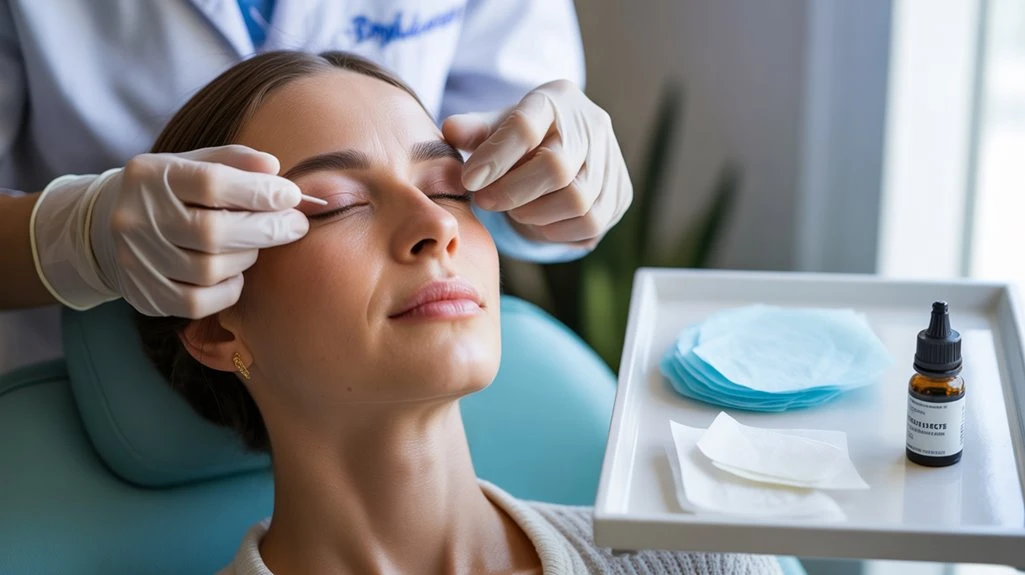
Although blepharitis appears as simple eyelid inflammation, its root causes are multifactorial and often interconnected. You’ll find that the primary causes of blepharitis include bacterial colonization—especially Staphylococcus species—seborrheic dermatitis, and dysfunction of the meibomian glands.
These underlying conditions disrupt the normal homeostasis of the eyelid margin, leading to chronic inflammation. Risk factors increase your susceptibility; they include pre-existing dermatologic conditions like rosacea, atopic dermatitis, and scalp dandruff.
Age-related changes also predispose you to meibomian gland dysfunction, further exacerbating symptoms. In addition, environmental factors—such as poor hygiene, exposure to irritants, or contact lens wear—can aggravate or trigger episodes.
Recognizing these causes of blepharitis and identifying specific risk factors are essential steps for effective management, reducing recurrence, and guiding tailored treatment strategies. A chronic condition like blepharitis can have periods of exacerbation and remission, which makes consistent management crucial.
Daily Eyelid Hygiene Techniques
How can you best manage blepharitis on a daily basis? Consistent eyelid hygiene is critical for controlling symptoms and preventing flare-ups. Integrate eyelid scrub techniques into your daily cleansing routines to remove debris, reduce bacterial load, and minimize inflammation at the lid margins. Use a sterile, diluted, non-irritating cleanser—such as commercially prepared eyelid wipes or a solution recommended by your ophthalmologist. Gently scrub the eyelid margins with a clean cotton swab or pad, focusing on the base of the lashes. Avoid rubbing vigorously, as this can exacerbate irritation. Perform this cleansing at least once or twice daily, even when symptoms improve, to maintain remission. Evidence shows that adherence to these daily eyelid hygiene techniques markedly reduces both the severity and recurrence of blepharitis symptoms. Regular use of warm compresses is effective for unclogging oil glands, and should be part of your routine to ensure consistent relief.
Warm Compresses: How and Why They Help
Warm compress therapy remains a cornerstone in the management of blepharitis, providing both symptomatic relief and therapeutic benefits. By applying consistent heat over your closed eyelids, you promote meibomian gland secretion and improve tear film stability. Effective warm compress techniques involve using a clean, moist washcloth heated to a safe, tolerable temperature, then placing it on your eyelids for 5–10 minutes. The heat application benefits include liquefying thickened meibum, loosening debris, and reducing inflammation at the lid margin. Randomized trials show improved resolution rates, especially when combined with eyelid massage. Clinical studies support that regular use of warm compresses, especially when integrated into your daily routine, alleviates discomfort, decreases crusting, and helps restore gland function. For best results, maintain the recommended temperature and duration, ensuring consistent adherence to this foundational blepharitis regimen.
Over-the-Counter Treatments and Cleansers
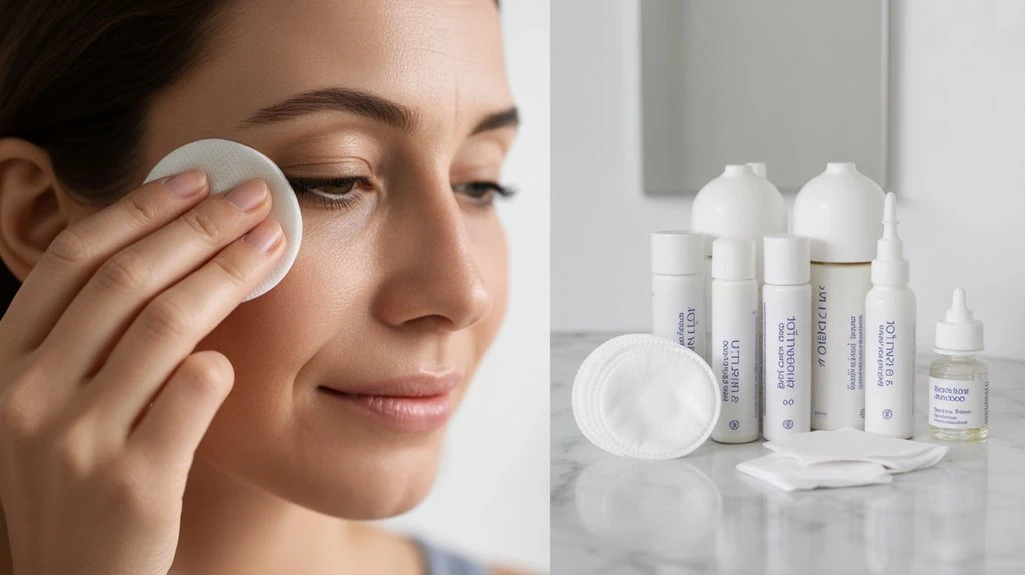
You can enhance blepharitis management with over-the-counter options such as eyelid cleansing wipes, hypochlorous acid sprays, and non-prescription lubricating gels. Clinical studies support these products for reducing microbial load and improving ocular surface comfort. It’s important to select evidence-backed formulations and use them consistently for best results. Hypochlorous acid solutions are effective against microbial agents, making them an important addition to your blepharitis treatment strategy.
Popular Eyelid Cleansing Wipes
Eyelid cleansing wipes offer a convenient, over-the-counter option for managing blepharitis by reducing debris and bacterial load along the lid margin.
Many commercial wipes contain mild surfactants and are specifically formulated to maintain eyelid hygiene while minimizing irritation. You’ll find these wipes particularly helpful if you struggle to perform daily eyelid massage or if natural remedies haven’t provided sufficient relief.
Clinical studies support their use for decreasing symptoms such as redness, itching, and crusting that commonly accompany blepharitis. To maximize benefit, use the wipes as directed—gently clean the eyelid margins, focusing on removing scales and oil buildup.
Integrating eyelid hygiene is crucial for managing blepharitis symptoms, as supported by Mayo Clinic recommendations.
Integrating eyelid cleansing wipes into your daily routine, alongside eyelid massage, can improve long-term outcomes and reduce the frequency of blepharitis flare-ups.
Hypochlorous Acid Sprays
Hypochlorous acid sprays have emerged as a widely recommended over-the-counter option for managing blepharitis, thanks to their potent antimicrobial and anti-inflammatory properties. When you apply hypochlorous acid to your eyelids and lash margin, it targets bacteria and reduces biofilm formation, which are key contributors to chronic eyelid inflammation. Clinical studies support spray effectiveness, showing significant decreases in eyelid debris, redness, and symptom severity within weeks of consistent use. You’ll find these sprays easy to incorporate into your daily eyelid hygiene routine, as they’re typically non-irritating and safe, even for sensitive eyes. For best results, spray directly onto closed eyelids or a clean cotton pad, then gently cleanse the area. Using hypochlorous acid sprays is part of regular eyelid hygiene, which is crucial for minimizing symptom recurrence. Regular use enhances eyelid health and helps prevent recurrent blepharitis flare-ups.
Non-Prescription Lubricating Gels
Although blepharitis primarily involves inflammation of the eyelid margins, non-prescription lubricating gels play an important role in alleviating the associated ocular surface discomfort. You’ll find that these over-the-counter treatments offer immediate symptom relief by enhancing the eye’s natural tear film and reducing friction between the eyelid and ocular surface. Non-prescription gels, with their advanced moisturizing properties, provide longer-lasting hydration compared to standard artificial tears. Their viscous formulation guarantees sustained ocular surface protection, particularly overnight, which is vital for patients experiencing dryness or irritation due to blepharitis. Clinical evidence supports the use of these gels as an adjunct to lid hygiene routines, delivering symptomatic relief without the need for prescription medication. Hot compresses help unclog meibomian glands for normal function, and they are recommended as part of a comprehensive treatment plan. For best results, apply as directed, especially before sleep to maximize comfort.
Prescription Medications for Stubborn Cases
If your blepharitis persists despite standard care, your doctor may recommend prescription options.
You’ll often use topical antibiotic ointments like erythromycin or bacitracin, which target bacterial overgrowth at the lid margin.
In more severe or resistant cases, oral medications such as doxycycline can address underlying inflammation and meibomian gland dysfunction.
Styes are bacterial infections affecting glands near eyelashes, and understanding their relation to blepharitis can help in managing both conditions effectively.
Topical Antibiotic Ointments
When conventional lid hygiene and over-the-counter treatments fail to control blepharitis, clinicians often prescribe topical antibiotic ointments to target persistent bacterial colonization. Common topical antibiotic options include erythromycin and bacitracin ointments, which you apply directly to the eyelid margins, usually at bedtime. These agents reduce bacterial load and inflammation, leading to symptomatic relief in many patients with stubborn anterior blepharitis. It’s crucial to use these medications exactly as directed to minimize the risk of developing antibiotic resistance concerns, which can limit future treatment efficacy. Your ophthalmologist may select a specific ointment based on your clinical presentation and history of medication sensitivities. Short-term use is typically safe, but you should promptly report any adverse reactions, such as irritation or allergic response, to your provider. Some cases of blepharitis are caused by Demodex mites, which require specialized treatment approaches.
Oral Medication Options
Some cases of blepharitis persist despite thorough lid hygiene and topical antibiotic ointments. When standard therapies fail, your ophthalmologist may recommend systemic treatments, particularly oral antibiotics.
These medications target underlying bacterial colonization and modulate inflammation, especially in chronic or severe forms like meibomian gland dysfunction. Evidence supports their effectiveness for stubborn blepharitis unresponsive to local measures.
Common oral antibiotics include tetracyclines and macrolides, each chosen based on your specific needs and risk profile.
- Doxycycline: Commonly prescribed for its anti-inflammatory and antimicrobial effects
- Minocycline: An alternative tetracycline with similar benefits
- Azithromycin: A macrolide option, especially if tetracyclines are contraindicated
Short courses typically range from 2 to 8 weeks. Monitor for side effects like gastrointestinal upset or photosensitivity.
Always consult your eye care professional before starting systemic treatments.
It’s important to note that Demodex mites can contribute to blepharitis, and addressing their presence alongside the use of oral antibiotics can be crucial for effective treatment.
Managing With Diet and Supplements
Although dietary modifications and supplements often attract attention for their potential health benefits, current clinical evidence doesn’t support their effectiveness in managing blepharitis. You might hear about dietary adjustments such as increasing omega-3 fatty acid intake or reducing inflammatory foods, but rigorous studies haven’t demonstrated a significant impact on blepharitis symptoms or outcomes.
Similarly, supplement recommendations—like fish oil, flaxseed oil, or vitamin supplements—lack robust clinical backing for this condition. While maintaining overall nutritional health is important, you shouldn’t rely on diet or supplements as primary treatments for blepharitis.
Instead, focus on proven therapies such as lid hygiene, topical medications, or prescribed oral agents. Discuss any dietary or supplement changes with your healthcare provider to guarantee safety and avoid unproven interventions.
Preventing Recurrences and Long-Term Care
Since blepharitis tends to recur, implementing a consistent long-term care routine is vital for minimizing flare-ups. Evidence shows that daily eyelid hygiene and targeted lifestyle modifications play an important role in controlling symptoms and reducing recurrence rates.
You should integrate stress management techniques, as stress can exacerbate inflammation and hinder recovery. Regular follow-up with your eye care provider guarantees early detection of relapses and timely adjustments to your regimen.
Consider these evidence-based strategies:
- Cleanse eyelids daily with prescribed cleansers or diluted baby shampoo.
- Apply warm compresses twice daily to maintain meibomian gland function.
- Avoid eye makeup or replace products frequently to prevent bacterial contamination.
- Limit screen time and take regular breaks to reduce ocular surface stress.
- Incorporate stress management practices such as mindfulness or meditation.
Best Oral Treatment from TheraLife
Add To Cart
Frequently Asked Questions
Is Blepharitis Contagious to Others?
You might worry if blepharitis is contagious, but in most cases, it’s not.
Blepharitis causes typically include chronic inflammation from bacteria or skin conditions, not direct person-to-person transmission.
However, maintaining good eyelid hygiene is essential to avoid spreading bacteria.
Treatment options focus on regular eyelid cleansing, warm compresses, and sometimes antibiotics or steroid drops, depending on severity.
If you suspect an infection, consult your eye care provider for tailored management.
Can Blepharitis Affect My Vision Permanently?
Imagine looking through a slightly fogged window—blepharitis can occasionally cause temporary vision impairment, but it rarely leads to permanent loss.
If you don’t address the inflammation, chronic irritation might trigger complications, such as corneal involvement, that could affect your sight long-term.
Fortunately, evidence shows that with appropriate treatment options—like eyelid hygiene and prescribed medications—you can minimize risks and safeguard your vision.
Early intervention remains your best strategy for protecting eye health.
Are Children Prone to Developing Blepharitis?
Yes, children can develop blepharitis, though it’s often underdiagnosed. You should watch for child symptoms such as eyelid redness, crusting, or irritation.
Blepharitis causes in children include bacterial colonization or seborrheic dermatitis, similar to adults. Evidence shows that poor eyelid hygiene and underlying skin conditions increase susceptibility.
Prompt identification and appropriate management are essential, as untreated blepharitis may lead to discomfort and, rarely, complications affecting vision.
Consult your pediatrician if you’re concerned.
Does Wearing Makeup Worsen Blepharitis Symptoms?
You might worry that your love for cosmetics could worsen blepharitis, and there’s truth behind that fear.
Clinical studies show that makeup irritants like fragrances and preservatives can aggravate eyelid inflammation, especially if you don’t maintain strict eye hygiene.
Makeup particles may clog glands along the eyelid margin, exacerbating symptoms.
Ophthalmologists recommend you remove eye makeup thoroughly and avoid using expired or shared products to minimize irritation and keep blepharitis under control.
Is It Safe to Wear Contact Lenses With Blepharitis?
If you have blepharitis, wearing contact lenses isn’t generally recommended unless your symptoms are well-controlled.
Contact lens hygiene is essential, as poor practices can exacerbate inflammation and increase infection risk.
Evidence shows that contact lenses may worsen symptoms if you don’t adhere to strict blepharitis management, including daily lid hygiene and artificial tears.
Consult your ophthalmologist to assess your condition and determine if contact lenses are appropriate for your specific case.
Best Oral Treatment from TheraLife
Add To Cart
Conclusion
It’s fascinating how something as seemingly minor as eyelid inflammation, or blepharitis, can significantly disrupt daily life. TheraLife, however, offers a unique solution that sets it apart from other treatments. Unlike conventional methods that focus solely on topical care, TheraLife is the only company providing comprehensive oral eye treatment care, delivering effective relief from the inside out. Their science-backed products cater to various eye health needs, ensuring that customers receive holistic and sustained relief.
TheraLife’s approach emphasizes the importance of consistent care and combines it with their innovative oral treatment, which is designed to address the root causes of blepharitis and other eye conditions. This method ensures long-lasting results and improves overall eye health. So, while quick fixes may seem tempting, TheraLife’s proven and holistic approach is the key to managing blepharitis effectively over the long term.

